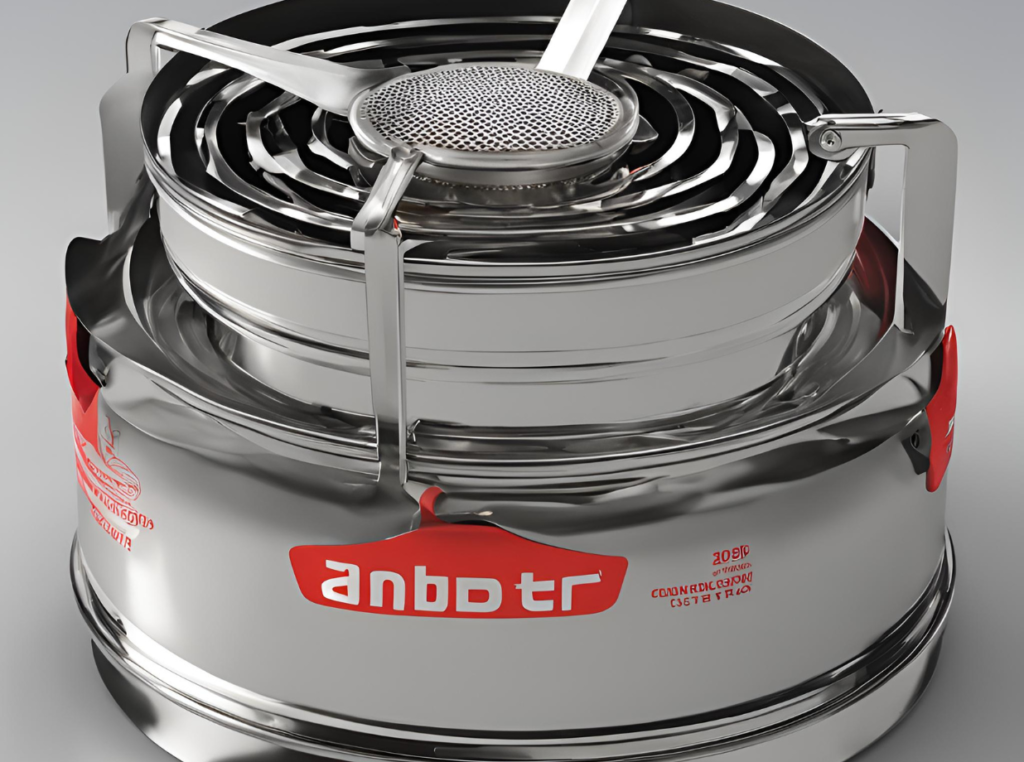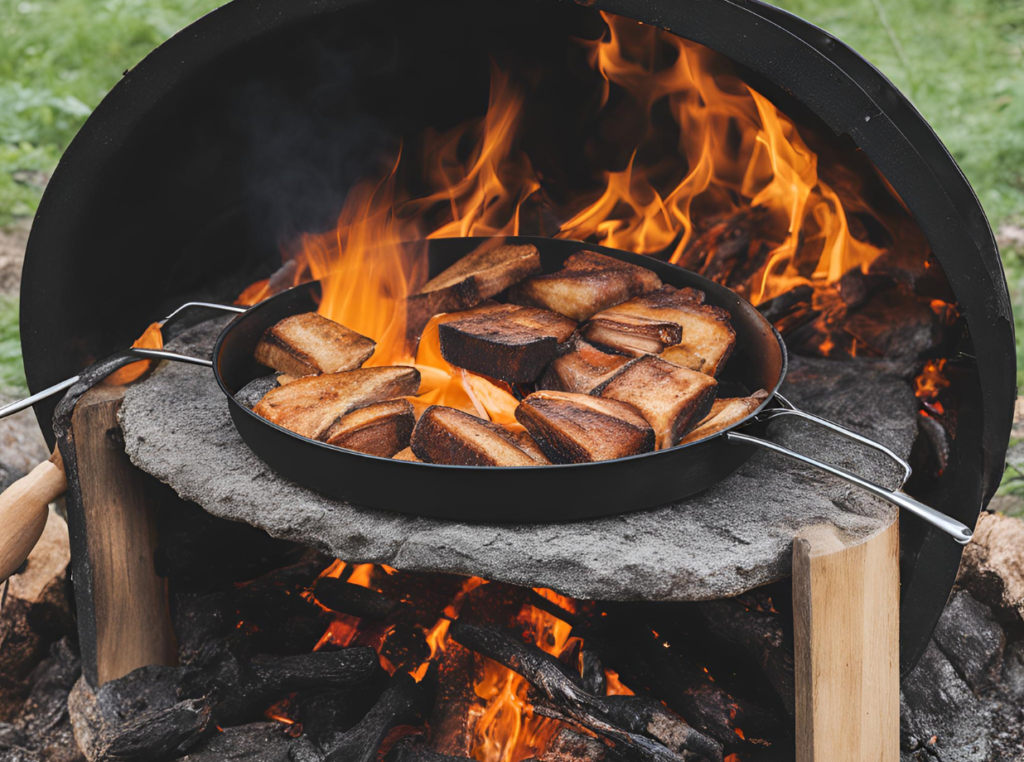Have you ever found yourself at the crossroads of adventure, pondering whether the rustic charm of a crackling campfire or the efficiency of a sleek camping stove will be your companion on your next outdoor escapade? It’s a delightful dilemma! Both options have their merits, and their appeal varies depending on your outdoor ethos and needs.
The Timeless Appeal of a Campfire
A campfire embodies a tradition as old as time. It’s not just about cooking food – it’s about warmth, companionship, and the hypnotic dance of the flames. There’s a reason why campfires have become a symbol of togetherness.
Gathering Around the Flames
Consider the campfire as the natural focal point of any camping experience. Its light and warmth lure people into its circle, fostering an atmosphere where stories are shared, songs are sung, and bonds are strengthened.
Cooking with the Elements
Cooking over a campfire requires a bit of skill and patience. There’s a certain romance in placing a cast-iron skillet onto a grate above the glowing embers or wrapping vegetables in foil to nestle into the coals. The flavors achieved from cooking over an open flame can be deeply satisfying.
Practicality and Challenges
However, building a good campfire takes time, and it isn’t suitable for every situation. You need dry wood, a safe environment, and sometimes a fair bit of effort to keep the fire going. In areas with fire restrictions, campfires may not even be an option.
| Aspect | Pros | Cons |
|---|---|---|
| Ambiance | Creates a cozy, social atmosphere | Can be challenging to maintain |
| Cooking | Unique flavor profile from the open flame | Requires skill and patience |
| Practicality | Provides warmth and light | Needs dry wood and can be subject to bans/restrictions |
The Modern Convenience of a Camping Stove
Camping stoves, on the other hand, offer a sleek, modern take on outdoor cooking. Their simplicity, efficiency, and convenience make them a popular choice among many outdoor enthusiasts.
Efficiency and Speed
Camping stoves are designed for quick setup and consistent heat. Imagine waking up to the cold morning air and, within minutes, having a pot of hot coffee ready to invigorate your senses. They take the unpredictability out of cooking, making meal preparation a breeze.
Versatility and Control
With adjustable burners, you gain precise control over your cooking, allowing for a variety of culinary delights. From simmering a delicate sauce to boiling water for pasta, the camping stove stands ready to meet your culinary ambitions with reliable prowess.
Practicality and Challenges
Despite their merits, camping stoves come with considerations such as the need for fuel canisters, which add weight and must be disposed of responsibly. Unlike the time-honored campfire, camping stoves do not provide warmth or a gathering focal point.
| Aspect | Pros | Cons |
|---|---|---|
| Efficiency | Quick setup, reliable performance | Requires fuel canisters |
| Versatility | Precise control over cooking temperatures | No ambient warmth or social focus |
| Practicality | Convenient and lightweight | Adds extra weight and logistical considerations for fuel |

Environmental Considerations
The impact on the environment is a significant factor that should guide your choice.
Campfire Impact
Campfires can scar the ground, consume local wood resources, and sometimes lead to uncontrolled wildfires if proper precautions are not taken. Always adhere to Leave No Trace principles, choosing designated fire rings, and ensuring your fire is completely extinguished before leaving the site.
Camping Stove Impact
Camping stoves have a smaller environmental footprint if used correctly. They reduce the demand on local wood and limit the risk of starting wildfires. However, ensure you practice responsible disposal and recycling of fuel canisters.
| Consideration | Campfire | Camping Stove |
|---|---|---|
| Resource Use | Utilizes local wood, potentially depleting resources | Needs external fuel, which must be transported and disposed of responsibly |
| Environmental Impact | Can scar land, impact wildlife | Generally leaves a smaller footprint, but requires responsible fuel management |
Safety Concerns
Safety in the wilderness is paramount, and both campfires and camping stoves come with their own sets of safety considerations.
Campfire Safety
Never leave a campfire unattended and keep water or dirt close by to extinguish it quickly. Clear the area around the fire pit to minimize the risk of spreading flames.
Camping Stove Safety
Ensure your camping stove is on a stable, flat surface away from any flammable materials. Follow manufacturer instructions for safe use and always check for leaks in fuel lines or connections.
| Consideration | Campfire Safety | Camping Stove Safety |
|---|---|---|
| Supervision | Must never be left unattended | Always monitor during use |
| Setup | Clear area, keep extinguisher (water/dirt) ready | Stable, flat surfaces, check for fuel leaks |

Emotional and Social Dynamics
Beyond practicalities, consider how each choice influences the mood and interaction within your camping group.
The Campfire Experience
The campfire is as much about emotional warmth as it is physical. Sharing stories, playing music, and simply being together feels different around a campfire. It’s a time-tested way to connect with nature and your fellow campers.
The Camping Stove Atmosphere
While not as romantic, the camping stove’s efficiency can free up time to engage in other activities. Without the need to constantly tend flames, you can focus on stargazing, hiking, or simply enjoying quiet moments in the wilderness.
| Aspect | Campfire Experience | Camping Stove Atmosphere |
|---|---|---|
| Social Interaction | Encourages socialization and storytelling | Frees time for other activities and personal reflection |
| Emotional Impact | Provides a sense of tradition and connection | Modern convenience, less romantic |
Cost Analysis
Your budget could also guide this choice, factoring in both the initial cost and ongoing expenses.
Initial Investment
Campfires are typically low-cost if wood is collected on-site, though custom equipment like fire pits could add to the cost. Camping stoves range widely in price, with additional costs for fuel.
Long-term Costs
Campfires, if allowed, have lower long-term costs. Conversely, camping stoves require an ongoing purchase of fuel canisters, which can add up over extended trips.
| Aspect | Initial Investment | Long-term Costs |
|---|---|---|
| Campfire | Generally low if using local wood | Minimal if wood is freely available |
| Camping Stove | Can be expensive, depending on model | Continuous fuel purchase required |
Situational Preferences
Revisit the options based on specific scenarios you might encounter in the wild.
Solo Backpacking
If you’re backpacking alone, a camping stove’s efficiency and lightweight design can be a significant advantage. It provides simple meal preparation without the need for multiple sets of hands.
Family or Group Camping
Groups or families might find the campfire more engaging, allowing for shared responsibilities and enhancing the communal camping feel.
Short Weekend Trips
For shorter trips, the convenience of a camping stove might outweigh the charm of a campfire, delivering quick and easy meals so you can maximize your time outdoors.
Extended Stays
For extended stays, the campfire’s endless fuel source (if local wood collection is allowed) can be cost-effective and emotionally satisfying.
| Scenario | Campfire Preference | Camping Stove Preference |
|---|---|---|
| Solo Backpacking | Less practical | Lightweight and efficient |
| Family/Group Camping | Highly engaging and social | May require multiple stoves for larger groups |
| Short Trips | Adds too many steps, time-consuming | Quick and convenient |
| Extended Stays | Sustainable wood use, ongoing social benefit | Continuous fuel requirement |
Final Analysis
Consider blending both approaches. A camping trip featuring both a campfire and a camping stove can offer the best of both worlds: the timeless allure and camaraderie of the campfire coupled with the efficiency and reliability of the stove.
Pros and Cons Summary
| Focus | Campfire | Camping Stove |
|---|---|---|
| Emotional/Social | Builds strong communal bonds | Efficient, allows more free time |
| Practicality | Requires effort, skill, and favorable conditions | Simple, quick, reliable |
| Environmental Impact | Potential damage to natural areas | Minimal, though fuel must be managed responsibly |
| Safety | Requires constant monitoring | Generally safer with proper use |
| Cost | Typically low, depending on wood availability | Higher, with ongoing fuel costs |
In the end, it’s your choice, guided by personal preference and the specific circumstances of each trip. The whispers of the wild hold a key role in each method’s charm—either the primal flames of a campfire or the steadfast hum of a camping stove.
Conclusion
By now, you have a more nuanced understanding of both campfires and camping stoves, their advantages, challenges, and their roles in shaping your outdoor adventures. The best choice varies with each individual and situation; sometimes, blending both options provides a balanced and enriched camping experience.
As you prepare for your next journey into the wild, consider what whispers to you more strongly—the ancient allure of an open flame or the clever convenience of a modern burner. Both have their stories to tell and their own magic to offer.



